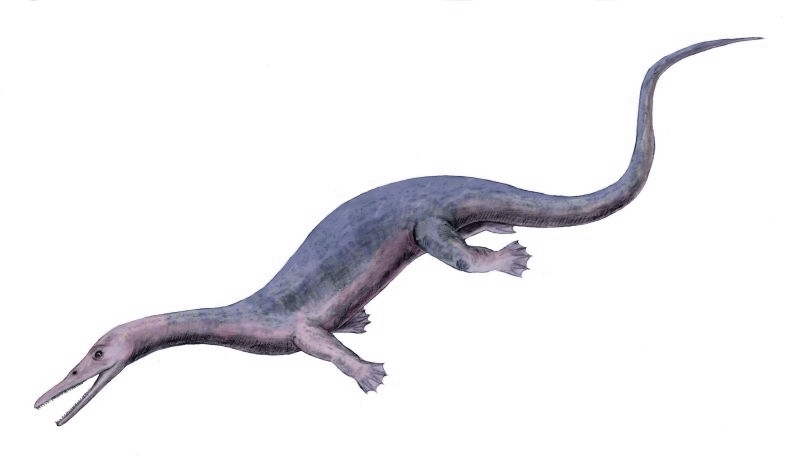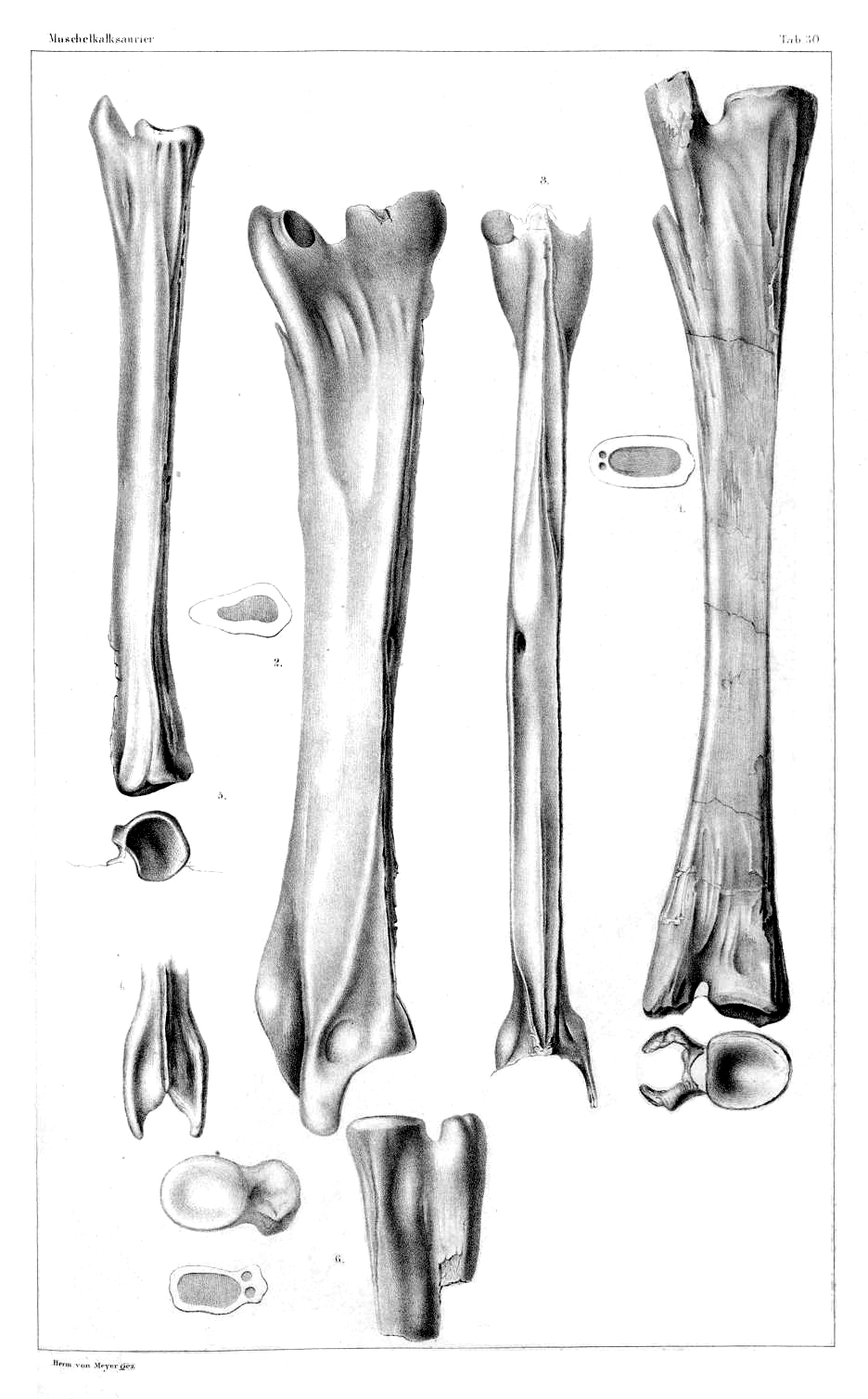|
Mixosaurus
''Mixosaurus'' is an extinct genus of Middle Triassic (Anisian to Ladinian, about 250-240 Mya) ichthyosaur. Its fossils have been found near the Italy– Switzerland border and in South China. The genus was named in 1887 by George H. Baur. The name means "Mixed Lizard", and was chosen because it appears to have been a transitional form between the eel-shaped ichthyosaurs such as ''Cymbospondylus'' and the later dolphin-shaped ichthyosaurs, such as ''Ichthyosaurus''. Baur named ''Mixosaurus'' as a new genus because its forefin was sufficiently different from that of ''Ichthyosaurus''. ''Mixosaurus'' includes 3 species. Previously this number was bigger, and ''Mixosaurus'' was considered as the most common genus of Triassic ichthyosaurs, whose fossils have been found all over the world, including China, Timor, Indonesia, Italy, Spitsbergen, Svalbard, Canada, as well as Alaska and Nevada in the US. Description ''Mixosaurus'' was a small ichthyosaur, measuring between long ... [...More Info...] [...Related Items...] OR: [Wikipedia] [Google] [Baidu] |
Carnian
The Carnian (less commonly, Karnian) is the lowermost stage of the Upper Triassic Series (or earliest age of the Late Triassic Epoch). It lasted from 237 to 227 million years ago (Ma). The Carnian is preceded by the Ladinian and is followed by the Norian. Its boundaries are not characterized by major extinctions or biotic turnovers, but a climatic event (known as the Carnian pluvial episode characterized by substantial rainfall) occurred during the Carnian and seems to be associated with important extinctions or biotic radiations. Stratigraphic definitions The Carnian was named in 1869 by Mojsisovics. It is unclear if it was named after the Carnic Alps or after the Austrian region of Carinthia (''Kärnten'' in German) or after the Carnia historical region in northwestern Italy. The name, however, was first used referring to a part of the Hallstatt Limestone cropping out in Austria. The base of the Carnian Stage is defined as the place in the stratigraphic record ... [...More Info...] [...Related Items...] OR: [Wikipedia] [Google] [Baidu] |
Besano Formation
The Besano Formation is a geological formation in the southern Alps of northwestern Italy and southern Switzerland. This formation, a short but fossiliferous succession of dolomite and black shale, is famous for its preservation of Middle Triassic marine life including fish and aquatic reptiles. It is exposed in the vicinity of Monte San Giorgio and is among the formations responsible for the area being designated as a UNESCO World Heritage Site. In Switzerland, it is also known as the Grenzbitumenzone. Geology General geology The Grenzbitumenzone is a relatively thin band of dark dolomite and shale, approximately 5 to 16 meters in total thickness. It extends about 10 km from east to west along the northern edge of Monte San Giorgio. In individual outcrops, the Grenzbitumenzone overlies the lower part of San Salvatore Dolomite, a thick and widespread carbonate-rich formation. The later parts of the San Salvatore Formation, exposed north of Monte San Giorgio, are partially ... [...More Info...] [...Related Items...] OR: [Wikipedia] [Google] [Baidu] |
Tribelesodon
''Tanystropheus'' (Greek ~ 'long' + 'hinged') is an extinct archosauromorph reptile from the Middle and Late Triassic epochs. It is recognisable by its extremely elongated neck, which measured long—longer than its body and tail combined. The neck was composed of 12–13 extremely elongated vertebrae. With its very long but relatively stiff neck, ''Tanystropheus'' has been often proposed and reconstructed as an aquatic or semi-aquatic reptile, a theory supported by the fact that the creature is most commonly found in semi-aquatic fossil sites wherein known terrestrial reptile remains are scarce. Fossils have been found in Europe. Complete skeletons of small individuals are common in the Besano Formation at Monte San Giorgio in Italy and Switzerland; other fossils have been found in the Middle East and China, dating from the Middle Triassic to the early part of the Late Triassic (Anisian, Ladinian, and Carnian stages).Dal Sasso, C. and Brillante, G. (2005). ''Dinosaurs of It ... [...More Info...] [...Related Items...] OR: [Wikipedia] [Google] [Baidu] |
Junior Synonym
The Botanical and Zoological Codes of nomenclature treat the concept of synonymy differently. * In botanical nomenclature, a synonym is a scientific name that applies to a taxon that (now) goes by a different scientific name. For example, Linnaeus was the first to give a scientific name (under the currently used system of scientific nomenclature) to the Norway spruce, which he called ''Pinus abies''. This name is no longer in use, so it is now a synonym of the current scientific name, '' Picea abies''. * In zoology, moving a species from one genus to another results in a different binomen, but the name is considered an alternative combination rather than a synonym. The concept of synonymy in zoology is reserved for two names at the same rank that refers to a taxon at that rank - for example, the name ''Papilio prorsa'' Linnaeus, 1758 is a junior synonym of ''Papilio levana'' Linnaeus, 1758, being names for different seasonal forms of the species now referred to as ''Araschnia le ... [...More Info...] [...Related Items...] OR: [Wikipedia] [Google] [Baidu] |
Late Triassic
The Late Triassic is the third and final epoch (geology), epoch of the Triassic geologic time scale, Period in the geologic time scale, spanning the time between annum, Ma and Ma (million years ago). It is preceded by the Middle Triassic Epoch and followed by the Early Jurassic Epoch. The corresponding series (stratigraphy), series of rock beds is known as the Upper Triassic. The Late Triassic is divided into the Carnian, Norian and Rhaetian Geologic time scale, Ages. Many of the first dinosaurs evolved during the Late Triassic, including ''Plateosaurus'', ''Coelophysis'', and ''Eoraptor''. The Triassic–Jurassic extinction event began during this epoch and is one of the five major mass extinction events of the Earth. Etymology The Triassic was named in 1834 by Friedrich August von Namoh, Friedrich von Alberti, after a succession of three distinct rock layers (Greek meaning 'triad') that are widespread in southern Germany: the lower Buntsandstein (colourful sandstone'')'', t ... [...More Info...] [...Related Items...] OR: [Wikipedia] [Google] [Baidu] |
Tanystropheus
''Tanystropheus'' (Greek ~ 'long' + 'hinged') is an extinct archosauromorph reptile from the Middle and Late Triassic epochs. It is recognisable by its extremely elongated neck, which measured long—longer than its body and tail combined. The neck was composed of 12–13 extremely elongated vertebrae. With its very long but relatively stiff neck, ''Tanystropheus'' has been often proposed and reconstructed as an aquatic or semi-aquatic reptile, a theory supported by the fact that the creature is most commonly found in semi-aquatic fossil sites wherein known terrestrial reptile remains are scarce. Fossils have been found in Europe. Complete skeletons of small individuals are common in the Besano Formation at Monte San Giorgio in Italy and Switzerland; other fossils have been found in the Middle East and China, dating from the Middle Triassic to the early part of the Late Triassic (Anisian, Ladinian, and Carnian stages).Dal Sasso, C. and Brillante, G. (2005). ''Dinosaurs of It ... [...More Info...] [...Related Items...] OR: [Wikipedia] [Google] [Baidu] |
Protorosauria
Protorosauria is an extinct polyphyletic group of archosauromorph reptiles from the latest Middle Permian (Capitanian stage) to the end of the Late Triassic (Rhaetian stage) of Asia, Europe and North America. It was named by the English anatomist and paleontologist Thomas Henry Huxley in 1871 as an order, originally to solely contain '' Protorosaurus''. Other names which were once considered equivalent to Protorosauria include Prolacertiformes and Prolacertilia. Protorosaurs are distinguished by their long necks formed by elongated cervical vertebrae, which have ribs that extend backward to the vertebrae behind them. Protorosaurs also have a gap between the quadrate bones and the jugal bones in the back of the skull near the jaw joint, making their skulls resemble those of lizards. While previously thought to be monophyletic, the group is now though to consist of various groups of basal archosauromorph reptiles that lie outside Crocopoda. Classification Protorosauria was cons ... [...More Info...] [...Related Items...] OR: [Wikipedia] [Google] [Baidu] |
Haptodus
''Haptodus'' is an extinct genus of basal sphenacodont, member of the clade that includes therapsids and hence, mammals. It was at least in length. It lived in present-day France during the Early Permian. It was a medium-sized predator, feeding on insects and small vertebrates. Discovery and history ''Haptodus baylei'' ''Haptodus baylei'', the type species of ''Haptodus'', is known only from a single, badly preserved specimen hosted in the Muséum National d'Histoire Naturelle of Paris. It was collected at Les Télots, near Autun of France, from a terrestrial horizon dating to the Asselian stage of the Cisuralian series, about 299-296.4 million years old. The taxonomy of many pelycosaurs was revised in details by Alfred Sherwood Romer & Llewellyn Price (1940). They synonymized many genera, including '' Callibrachion'' (from Margenne near Autun, France), '' Datheosaurus'' (from Nowa Ruda of Poland), '' Palaeohatteria'' and '' Pantelosaurus'' (both from Germany), with ... [...More Info...] [...Related Items...] OR: [Wikipedia] [Google] [Baidu] |
Cisuralian
The Cisuralian is the first series/epoch of the Permian. The Cisuralian was preceded by the Pennsylvanian and followed by the Guadalupian. The Cisuralian Epoch is named after the western slopes of the Ural Mountains in Russia and Kazakhstan and dates between 298.9 ± 0.15 – 272.3 ± 0.5 Mya. The Cisuralian is often synonymous with the informal terms early Permian or lower Permian. It corresponds approximately with the Wolfcampian in southwestern North America. The series saw the appearance of beetles and flies and was a relatively stable warming period of about 21 million years. Name and background The Cisuralian is the first series or epoch of the Permian. The Cisuralian was preceded by the last Pennsylvanian epoch (Gzhelian) and is followed by the Permian Guadalupian Epoch. The name "Cisuralian" was proposed in 1982, and approved by the International Subcommission on Permian Stratigraphy in 1996. The Cisuralian Epoch is named after the western slopes of the Ural Mountain ... [...More Info...] [...Related Items...] OR: [Wikipedia] [Google] [Baidu] |
Naosaurus
''Edaphosaurus'' (, meaning "pavement lizard" for dense clusters of teeth) is a genus of extinct edaphosaurid synapsids that lived in what is now North America and Europe around 303.4 to 272.5 million years ago, during the Late Carboniferous to Early Permian. American paleontologist Edward Drinker Cope first described ''Edaphosaurus'' in 1882, naming it for the "dental pavement" on both the upper and lower jaws, from the Greek ' ("ground"; also "pavement") and (') ("lizard"). ''Edaphosaurus'' is important as one of the earliest-known, large, plant-eating ( herbivorous), amniote tetrapods (four-legged land-living vertebrates). In addition to the large tooth plates in its jaws, the most characteristic feature of ''Edaphosaurus'' is a sail on its back. A number of other synapsids from the same time period also have tall dorsal sails, most famously the large apex predator ''Dimetrodon''. However, the sail on ''Edaphosaurus'' is different in shape and morphology. The first foss ... [...More Info...] [...Related Items...] OR: [Wikipedia] [Google] [Baidu] |
Edward Drinker Cope
Edward Drinker Cope (July 28, 1840 – April 12, 1897) was an American zoologist, paleontologist, comparative anatomist, herpetologist, and ichthyologist. Born to a wealthy Quaker family, Cope distinguished himself as a child prodigy interested in science; he published his first scientific paper at the age of 19. Though his father tried to raise Cope as a gentleman farmer, he eventually acquiesced to his son's scientific aspirations. Cope married his cousin and had one child; the family moved from Philadelphia to Haddonfield, New Jersey, although Cope would maintain a residence and museum in Philadelphia in his later years. Cope had little formal scientific training, and he eschewed a teaching position for field work. He made regular trips to the American West, prospecting in the 1870s and 1880s, often as a member of United States Geological Survey teams. A personal feud between Cope and paleontologist Othniel Charles Marsh led to a period of intense fossil-finding competit ... [...More Info...] [...Related Items...] OR: [Wikipedia] [Google] [Baidu] |





